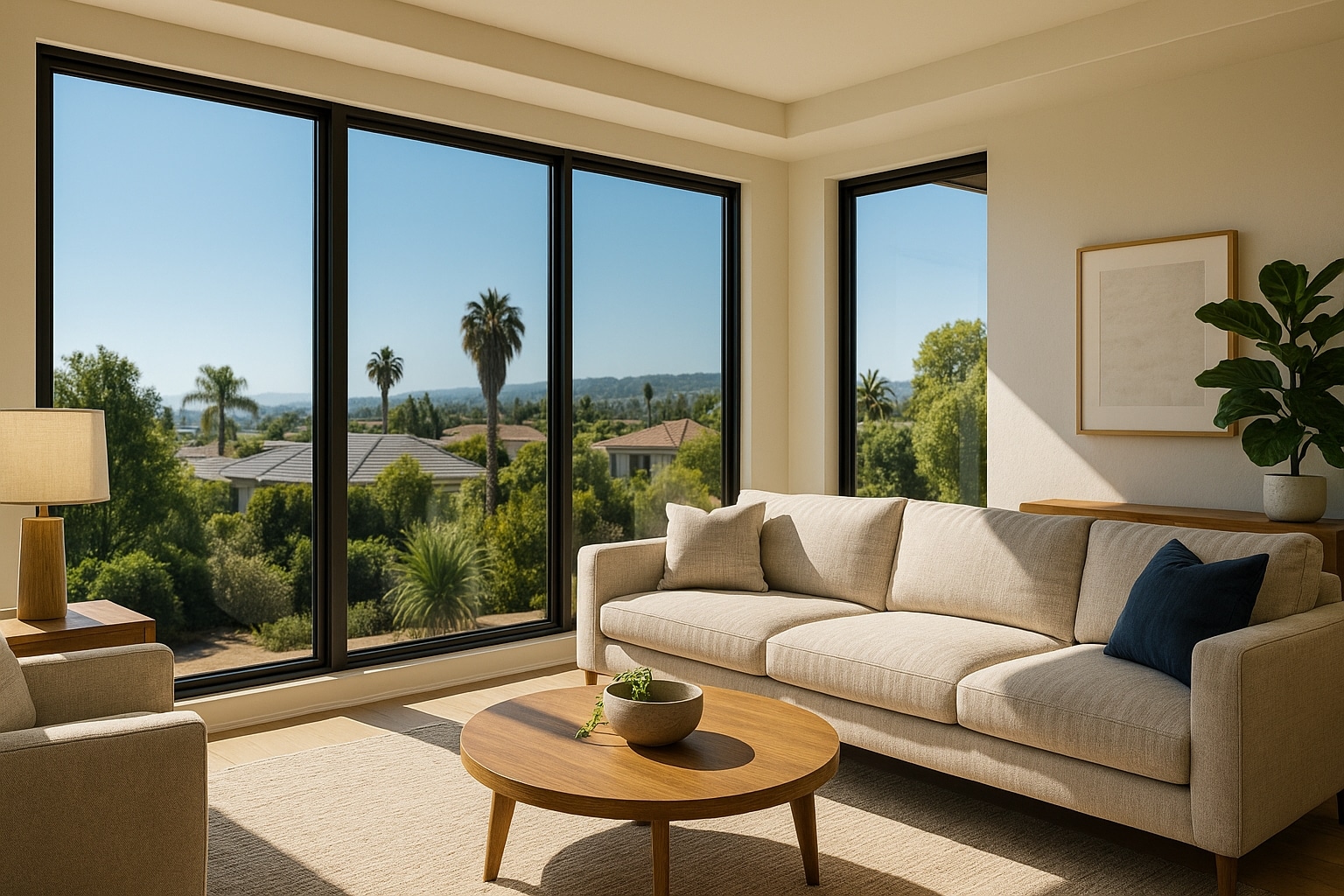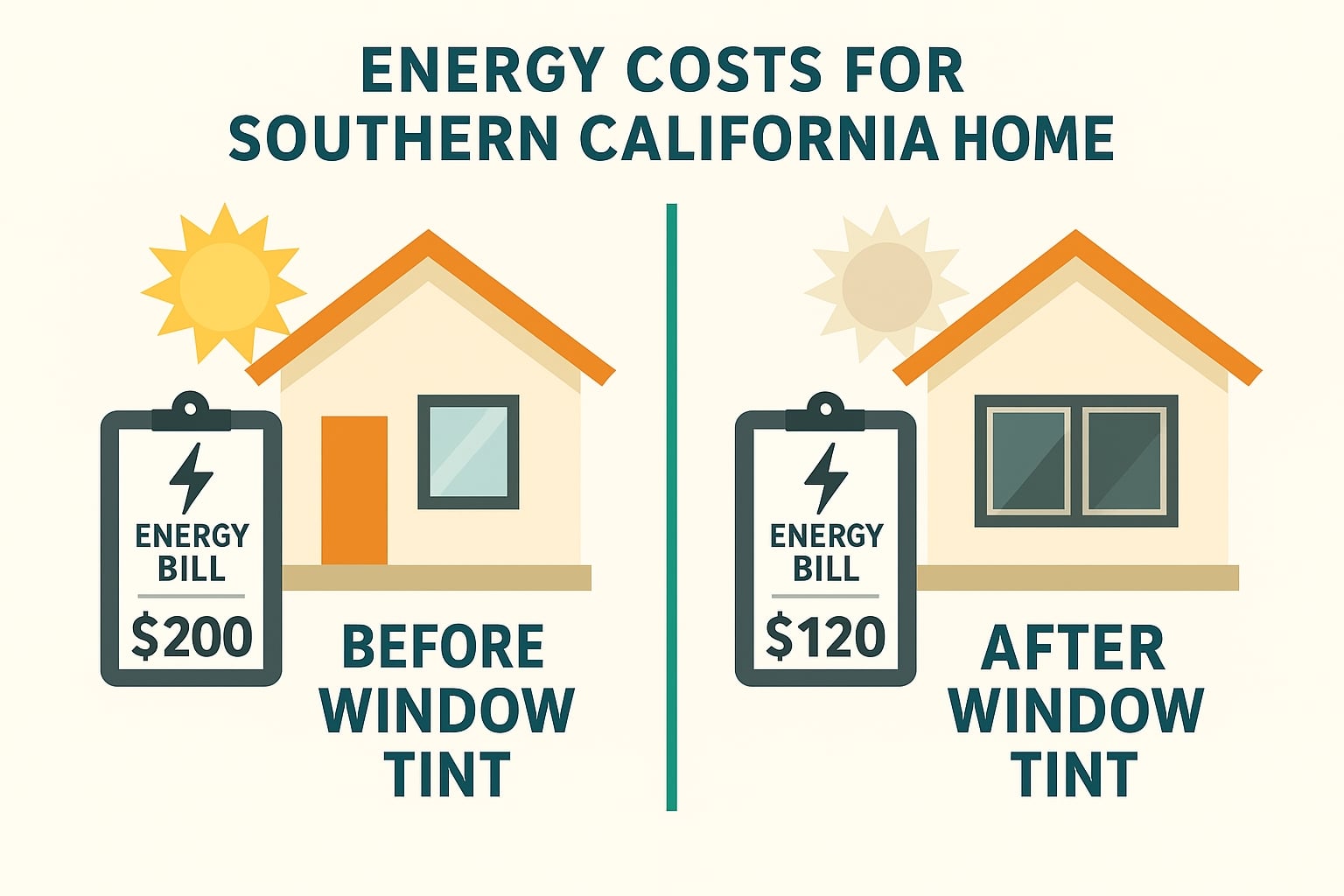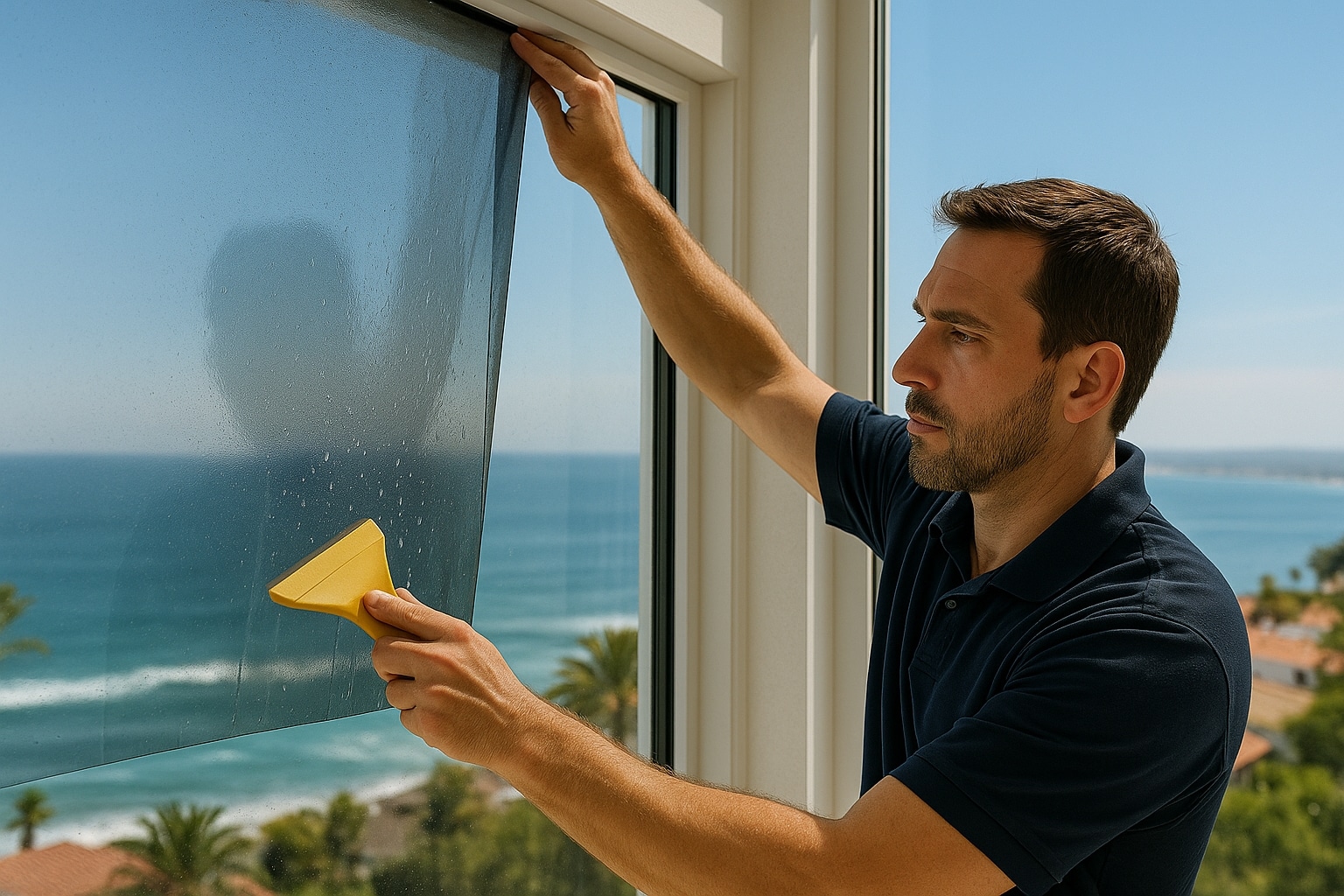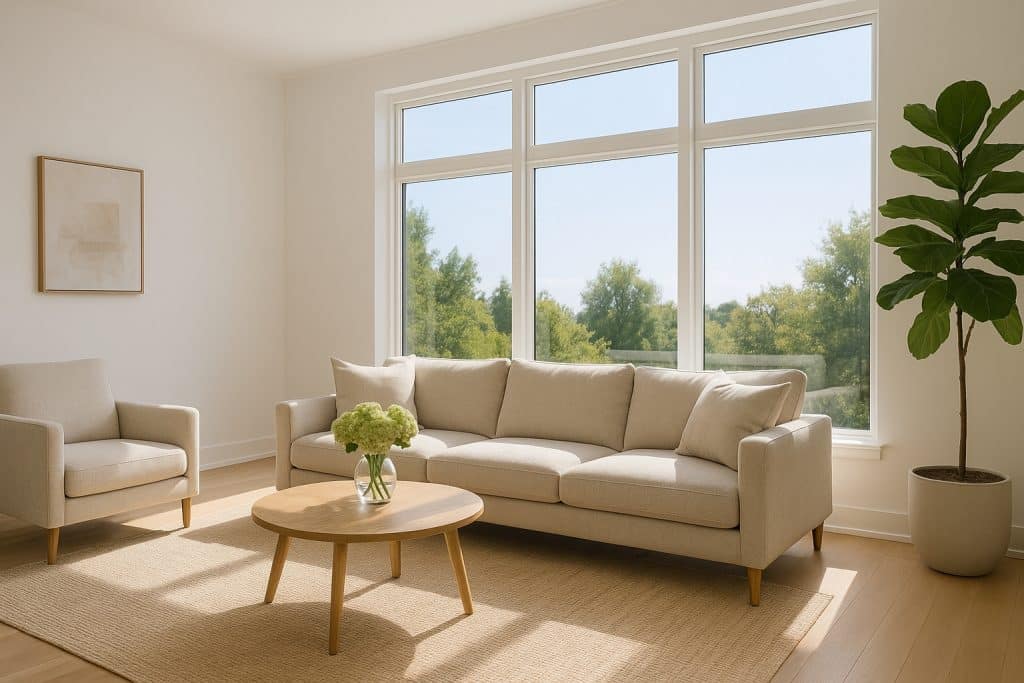Southern California is known for its sunshine-filled days, ocean breezes, and beautiful weather year-round. But with that constant sun exposure comes challenges for homeowners: increased indoor heat, glare, higher energy bills, and fading interiors. Many San Diego residents are turning to window tint for homes as a solution—but questions often arise before making the investment.
In this guide, we’ve gathered the top five questions homeowners ask about residential window tinting, along with expert insights to help you make an informed decision.

What Exactly Is Residential Window Tint?
Residential window tint is a thin, transparent or tinted film applied directly to your existing windows. Unlike replacing windows entirely, it’s an affordable upgrade that enhances performance and comfort.
Modern films are engineered using advanced technology:
- Dyed Films: Basic tint that reduces glare and adds privacy.
- Metalized Films: Reflective layers for stronger heat rejection (though less common today due to signal interference).
- Ceramic & Nano-Ceramic Films: Premium films offering maximum heat rejection, UV protection, and clarity without affecting Wi-Fi or cell signals.
In essence, window tinting allows you to keep the natural light while gaining energy savings, privacy, and protection.
How Does Window Tint Improve Comfort in Southern California Homes?
San Diego homeowners know the struggle of keeping indoor temperatures cool without overworking the air conditioner. Window tint addresses this issue head-on:
- Heat Reduction: High-quality tints block up to 80% of solar heat, reducing hot spots in rooms with direct sunlight.
- UV Protection: Over 99% of harmful UV rays are blocked, protecting your skin and furnishings.
- Glare Control: Ideal for home offices, TVs, and living rooms, where excessive sunlight makes screens difficult to see.
The result? A more comfortable home environment year-round, particularly during the region’s peak sunny months.

Does Window Tint Actually Save Money on Energy Bills?
Yes—many homeowners see noticeable energy savings after installation. When windows reject heat, your cooling system doesn’t have to work as hard, which lowers utility bills.
- Lower AC Usage: Especially in coastal and inland San Diego communities where summer heat is intense.
- Balanced Climate: Some films also help insulate, keeping warmth inside during cooler winter nights.
- ROI: The savings often pay for the cost of installation within just a few years.
Given California’s high energy costs, this efficiency upgrade is both environmentally and financially smart.
How Long Does Window Tint Last and What Maintenance Is Required?
Professional-grade films can last 15–25 years, depending on the product and exposure levels. Today’s ceramic and nano-ceramic tints are particularly durable, resisting peeling, bubbling, and discoloration.
Maintenance is simple:
- Use soft cloths or non-abrasive sponges.
- Stick to ammonia-free cleaners to avoid damaging the film.
- Avoid sharp tools near the glass.
When properly cared for, residential tinting offers long-term value without ongoing headaches.

Are There Legal or Aesthetic Concerns in California?
Unlike vehicle tinting, residential window tinting is less regulated. However, local homeowners’ associations (HOAs) or building codes may have specific guidelines for reflectivity and appearance. Always check before installation.
From a style standpoint, modern films are designed to enhance rather than detract from your home’s curb appeal. Options range from nearly invisible films to darker tints or frosted decorative styles—giving you flexibility to match your design preferences.
Why Choose Professional Installation Over DIY?
While DIY tint kits exist, expert installation ensures precision, durability, and compliance with local guidelines. Professionals use high-quality materials and specialized tools, guaranteeing a flawless finish without bubbles or uneven edges.
In San Diego, where sunlight is relentless, investing in professional installation ensures you get maximum performance and long-term satisfaction from your film.
Conclusion
Residential window tinting has evolved into a practical, stylish, and energy-efficient solution for Southern California homeowners. From keeping your interiors cool to saving on utility bills and protecting your furnishings, the benefits are clear.
By understanding the top questions—and their answers—you can make an informed choice that enhances both your comfort and your home’s value.

